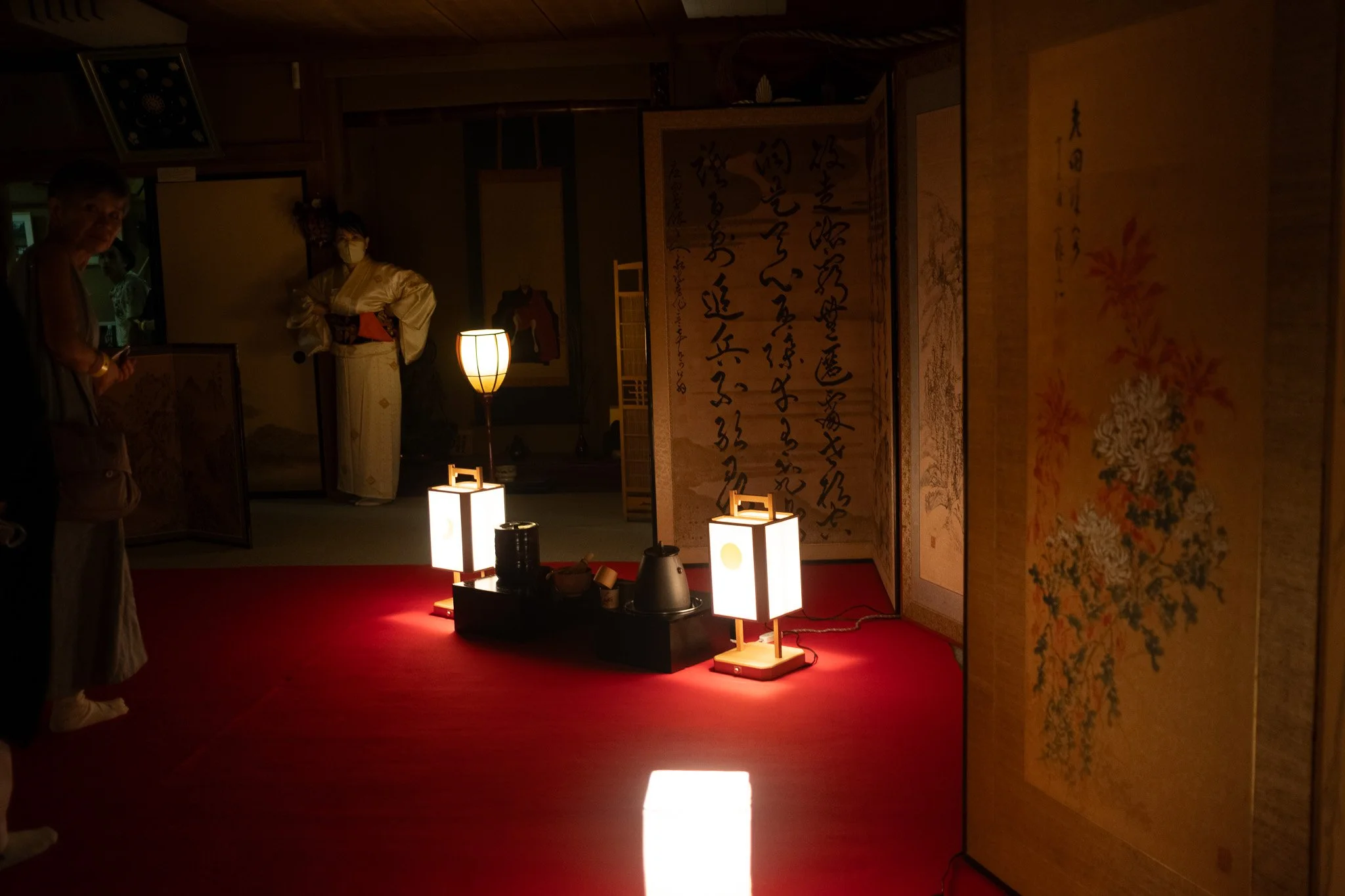Tsukimi (月見) - Moon Viewing and the Beauty of Slowing Down
If you happen to find yourself in Japan in September, you might notice something quietly magical happening. Lanterns glowing softly in temple gardens, sweet rice dumplings stacked neatly on window sills, tall grasses swaying in the breeze - and above it all, a full, glowing moon. This is Tsukimi, Japan’s traditional moon-viewing festival, and it’s one of the country’s most poetic seasonal celebrations.
While not as widely known among tourists as cherry blossom season or summer matsuri, Tsukimi offers a unique window into Japanese culture, where nature, reflection, and ritual come together under the autumn sky.
What is Tsukimi?
Tsukimi (月見) literally means “moon viewing”, and refers to a festival held in honour of the harvest moon - the brightest full moon closest to the autumn equinox. The celebration usually takes place in September, depending on the lunar calendar. In 2025, it’s expected to fall on 6th September.
Unlike loud or flashy festivals, Tsukimi is a more subtle affair. It's a time to pause, admire the changing season, and give thanks for the harvest. Traditionally, people offer seasonal foods to the moon, decorate their homes with pampas grass, and enjoy moonlit gatherings with family or friends.
A Glimpse into the Past
The roots of Tsukimi go back over a thousand years, to the Heian period (794–1185), when Japan’s aristocracy would hold moon-viewing parties complete with music, poetry, and sake. They would watch the moon reflected in ponds and compose verses celebrating its beauty.
As the tradition spread to the general public, it took on a more agricultural tone. People began offering rice, sweet potatoes, and other seasonal crops to thank the moon for a bountiful harvest, blending spiritual gratitude with community celebration.
Symbols of Tsukimi
Some simple but symbolic items make up a typical Tsukimi display:
Tsukimi dango (white rice dumplings): These are the stars of the show, often arranged in a little pyramid of 15, representing the full moon. They’re offered to the moon first, then eaten with sweet soy or kinako (roasted soybean flour).
Susuki (pampas grass): Tall and wispy, this is the go-to decoration. It symbolises rice plants and is believed to ward off evil spirits.
Seasonal foods: Chestnuts, taro, sweet potatoes, and mushrooms are commonly enjoyed - anything connected to the autumn harvest.
How is Tsukimi Celebrated Today?
While not everyone marks Tsukimi these days, the tradition is still very much alive in households, temples, and gardens across Japan.
At home, families might set up a small display near a window or balcony, light a candle, and enjoy dango while watching the moon.
Temples and Japanese gardens sometimes host special events with music, tea ceremonies, or even Noh theatre under the stars. The atmosphere is gentle, reflective, and utterly charming.
Even modern businesses get involved. Restaurants serve seasonal dishes, and convenience stores offer limited-edition Tsukimi snacks - everything from mochi to the ever-popular Tsukimi Burger (a burger topped with a fried egg to resemble the full moon).
How Can Travellers Join In?
If you’re visiting Japan in September, experiencing Tsukimi doesn’t have to be complicated.
1. Attend a moon-viewing event
Some of the best places to celebrate include:
Daikaku-ji Temple in Kyoto, with moonlit boat rides on a peaceful pond
Rikugien Garden in Tokyo, often open late with lanterns and tea stalls
Meigetsu-in Temple in Kamakura, whose name even means “Bright Moon”
These events aren’t loud or crowded - they’re quiet and beautiful, often with traditional music playing softly in the background.
2. Make your own Tsukimi picnic
Find a local park, grab some dango from a shop or supermarket, and enjoy the moonrise. Bring a little pampas grass if you’re feeling festive. It’s a lovely way to unwind and connect with the moment.
3. Try Tsukimi-inspired food
Look out for Tsukimi soba or udon (noodles topped with an egg), sweet treats in moon shapes, or seasonal bento boxes. Even if you can’t attend an official event, you can still taste the festival.
Why Tsukimi Matters
At its heart, Tsukimi is about appreciation - of the moon, of the season, of the quiet things that are easy to miss. It reminds us to slow down and take in what’s around us. In a country where nature plays such a key role in culture and tradition, Tsukimi is a lovely example of that harmony.
For travellers, it’s also a chance to experience a different side of Japan - gentle, introspective, and deeply rooted in time-honoured custom. Whether you're sipping tea in a temple garden or simply looking up at the moon from a quiet street, you'll be sharing in a tradition that's spanned generations.



